
views
Eradicating Chickweed in Lawns
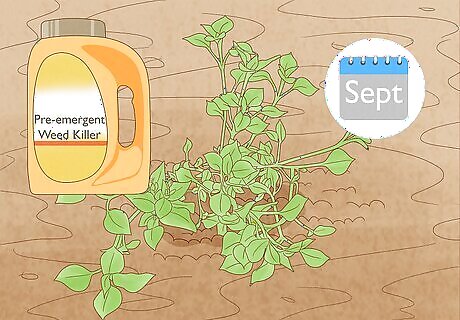
Apply a pre-emergent weed killer in September. Select a pre-emergent weed killer designed to get rid of chickweed from your local lawn and garden store or online. Pre-emergent weed killer should be applied to the entire lawn, and is generally sprayed over the grass. Follow the package instructions to determine how much to use. Do not use pre-emergent weed killer if you have yet to seed your lawn, as it may prevent your grass from sprouting.
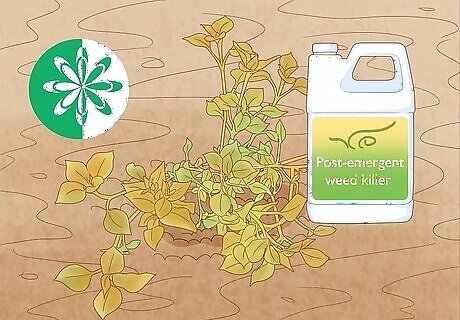
Apply a post-emergent weed killer in the spring. Choose a broadleaf weedkiller formulated for chickweed from a home and garden center or online. Once you see chickweed growing in your yard, treat problem areas by spraying them with the weed killer. To find out how much to apply, refer to the instructions on the package. Newly-seeded lawns should be cut at least 3 times before applying post-emergent weed killer in order to protect the young grass.
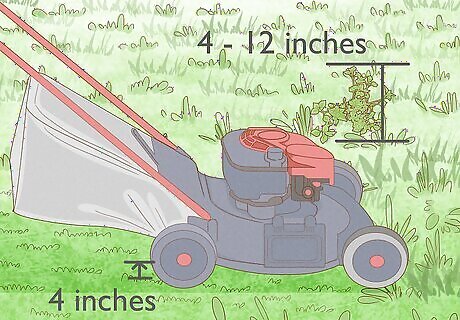
Keep your grass cut to 4 inches (10 cm) or less. Chickweed grows 4 to 12 inches (10 to 30 cm) tall and needs seeds to reproduce. Cutting your grass frequently to keep it short will prevent the chickweed from going to seed and spreading throughout your property. Use a sharp mower blade to keep your grass as healthy as possible and don’t cut it when it’s wet.
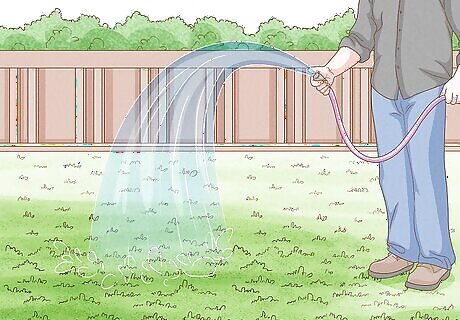
Water the lawn deeply and infrequently. Rather than providing small amounts of water to your lawn often, provide large amounts of water less often to help get rid of chickweed. Water the lawn down to the root zone, and wait to see signs of dehydration before watering again. Signs of dehydration include wilting or grayish grass and grass that holds a footprint for more than a few minutes.
Removing Chickweed in Gardens
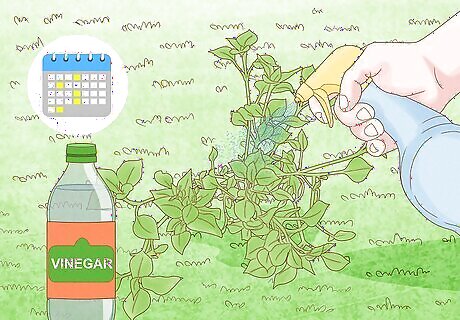
Spray patches of chickweed with vinegar or herbicide. If you prefer a simple solution, use distilled white vinegar. Put it in a clean spray bottle and spray it directly on the patches of chickweed throughout your garden, making sure to coat the entire plant. Reapply the vinegar once a week until the chickweed is gone. Alternatively, you can buy an herbicide, like glyphosate, from your local garden center. Refer to the package for application instructions.
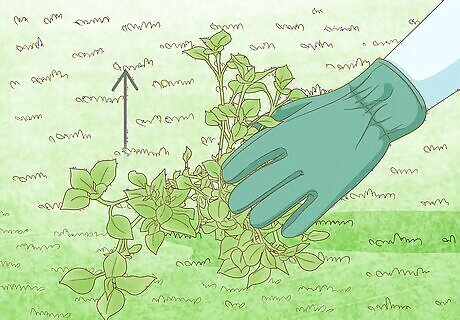
Pull out the chickweed by hand. After the vinegar or herbicide has killed the chickweed, grip the chickweed at the base of the plant and pull it out of the soil. If you have difficulty, raking the area may make the job easier. Place the chickweed in a bag before disposing of it to prevent the seeds from spreading. New, small plants may also be removed by hand, and the best time to pull them is before they flower. Wait until the soil is dry to prevent missed chickweed seeds from germinating in wet soil.

Till the soil. To reduce the likelihood of chickweed seeds taking root in your garden, till the soil. Remove all weed debris from your garden, then turn the soil over to a depth of 6 to 8 inches (15 to 20 cm) with a rototiller or shovel.

Spread 2 inches (5.1 cm) of mulch over your garden. Mulch reduces the amount of light that can reach weeds, making it an effective solution for controlling their growth. Choose an organic mulch, like wood chips or bark, and layer it at least 2 inches (5.1 cm) deep. Alternatively, use a synthetic mulch like landscape fabric. Don’t remove the fabric until the colder months.



















Comments
0 comment